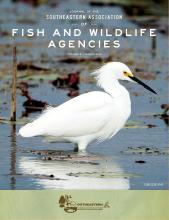Effects of Water-level Reductions on Littoral Habitat and Recreational Access in Brazos River Reservoirs, Texas
Reservoirs provide recreational opportunities along with water supplies, flood control, and hydroelectricity. Although recreational values are often considered in water management plans, reservoir regulators often lack data to evaluate the impacts of operations on fish habitat and recreational access. We partnered with the Brazos River Authority (BRA) and used reservoir bathymetry and side-imaging sonar data to investigate the effects of reservoir water-level changes on littoral habitat characteristics and boat access in 11 BRA reservoirs. Littoral area, coarse substrate, and submerged...
